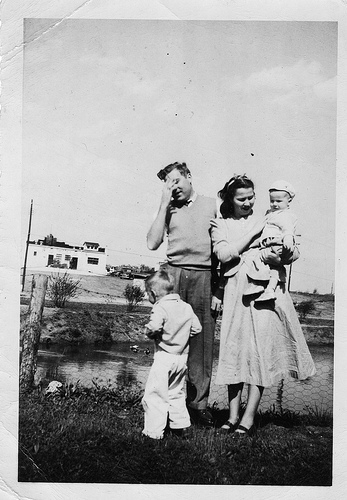
From 2002 to 2005, UCLA researchers videotaped 32 dual-income, multiple-child, middle-class American families for a week. They also noted the family members’ locations in the house and measured their stress levels with routine saliva tests.
The research team, which represented a range of disciplines, spent the next five years pouring over the resulting 1,540 hours of video, coding and categorizing the amount of time parents spend on different activities, including childcare, cleaning and housework, children’s homework, meal preparation, and leisure activities. They hoped to understand dual-income earning families better at the end of it, since their number is on the rise – from 36% in 1975 to 46% today.
Here are some of their findings:
- Mothers usually returned home from work first.
- Mothers spent 27% of their time on housework; fathers spent 18%; children spent 3 %.
- Mothers spent 35% of their time one-on-one with their kids; fathers spent 25%
- Mothers were more likely to watch TV during their one-on-one time with the kids; fathers were more likely to play in the backyard.
- Mothers spent 19% of their time talking to family members or on the phone and 11% occupied in leisure activities.
- Fathers spent 20% of their time talking to family members or on the phone and 23% occupied in leisure activities.
- Husbands and wives were together alone in the house about 10% of the time.
- The entire family gathered in one room about 14% of the time.
- Families spent very little time in their backyards.
- Mothers’ stress levels plummeted when talking to their husbands at the end of the day; fathers’ stress levels tapered much more slowly.
In a New York Times article about the study, Benedict Carey writes:
After more than $9 million and untold thousands of hours of video watching, they have found that, well, life in these trenches is exactly what it looks like: a fire shower of stress, multitasking and mutual nitpicking.
Carey quoted one of the researchers, post-doctoral fellow Anthony Graesch, as saying that the study was “The purest form of birth control ever devised. Ever.” (Graesch has two children.)
I found the study intriguing, although it’s hard to imagine that 32 families could represent 46% of American families in a country as diverse as the United States. And, although the researchers insist people got used to the cameras, it’s hard to imagine my own family acting as usual with cameras rigged all over our house and teams of researchers trolling around noting our locations and collecting saliva.
On the other hand, the findings don’t surprise me. My husband and I both worked outside the home for the first year of our son’s life, and it was definitely the most stressful period of our lives to date. (Of course working at home has its own share of challenges, but our lives are more sane now in many ways.)
One thing I came away with was how important it is to explicitly divide household labor and childcare duties in a household. The researchers noted that stress levels were much lower in families who agreed upon their divisions of labor than those who took a more casual approach and tried to figure it out as they went.
What do you think of this study? Do the results surprise you?